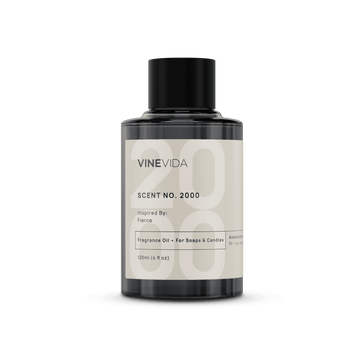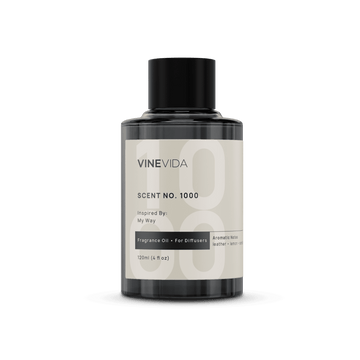A Skin of Color Society report estimated that more than 65% of African American people experience symptoms of hyperpigmentation due to skin damage or irritation. With such a large number of people, we ask whether there are any essential oils for hyperpigmentation. (Skin of Color, 2016)
What Exactly is Hyperpigmentation?

Hyperpigmentation darkens the skin in certain areas. "Pigment" means color, and "hyper" refers to too much of something. Hyperpigmentation usually shows brown, black, gray, red, or pink spots or patches. The spots are sometimes called age spots, sun spots, or liver spots. They can appear on people of any race or ethnicity. It's not harmful, but it can make some people self-conscious about their appearance.
It can take several forms, such as
- Freckles — tiny brown spots usually more visible after you've been out in the sun; liver spots or age spots, adequately referred to as lentigines;
- Post-inflammatory hyperpigmentation — where the skin discolors after suffering some injury.
- Melasma — where hormonal changes cause discoloration. You might sometimes hear Melasma referred to as "the mask of pregnancy" since so many women developed the condition then.
Anyone can be affected by Melasma; however, people with darker skin tones, including those of Asian, Indian, Middle Eastern, Latin Mediterranean, and African descent, are more likely to suffer, especially if there is a history of Melasma in the family. In addition, the condition affects more women than men, with more than 6 million sufferers worldwide and only 10% of sufferers being men.
Causes of Hyperpigmentation
Hyperpigmentation: can be caused by many things:
- Sometimes, family genetics can make you more prone, especially if there are freckles in the family.
- Hormonal changes during puberty, pregnancy, or menopause
- Suppose the skin is injured from cuts, burns, or acne. In this case, this is referred to as postinflammatory hyperpigmentation.
- Some medications, such as oral contraceptives or anything that causes sensitivity to light, can include some essential oils...
- Deficiencies in B12, folic acid, and other vitamins
- Sun damage (these spots are sometimes referred to as solar lentigines).
- Thyroid and Adrenal disorders such as Addison's disease In Addison's, the body does not manufacture enough cortisol.
Also Read: How to Make Face Serum with Essential Oils
Melanin's Role in Hyperpigmentation
Skin color determines how much melanin we have in our skin, which protects the skin from sun damage. Melanin is manufactured in the epidermis cells and can overproduce melanin if skin cells are damaged or unhealthy. Sometimes there can be a buildup of melanin, which makes that area darker as it clumps.
Melanocytes are the cells that produce melanin. Everyone has the same number of these in their skin, but each melanocyte can create different melanin levels. The more active your melanocytes are the darker your skin. There are two main types of melanin, Eumelanin, and Phaeomelanin. These determine skin tone. Individuals with darker-toned skin have mostly Eumelanin as compared to Phaeomelanin and vice-versa. (Sharma, 2015)
This activity is determined by Tyrosinase, an enzyme found in our melanocytes. Its job is to oxidize an amino acid called Tyrosine. This is what synthesizes melanin pigment. This is then taken to the upper skin layers and gives us color.
Melanocyte activity increases to protect our skin and prevent further damage if our skin suffers trauma from injury or the sun. Hormonal fluctuations, illnesses, and medications can also trigger the same changes.
Most skin care for hyperpigmentation contains agents thought to be able to limit Tyrosinase action.
Some tyrosinase inhibitors require dermatological prescriptions, but some natural ingredients have also been found to have the action.
Also Read: How to Treat Fever With Essential Oils
Which Essential Oils are Good for Treating Hyperpigmentation?
The skin-lightening industry is mammoth in its own right; however, research in this area also benefits that, although the two conditions don't seem to be connected, some aspects of Alzheimer's disease are associated with dysfunctional tyrosinase trafficking (Wang, 2005). Therefore, massive amounts of research money are being pumped into understanding how to influence how Tyrosinase works.
1. Sandalwood
Cited in the Rig Veda 5000 years ago, sandalwood has always been used for evening skin tone. Ayurveda, varṇya, raktaprasādana, tvacya are a few terms specifying skin lightening. (Sharma, 2015) In 2013, it was demonstrated that alpha-santanol was the leading anti-tyrosinase agent. The author of the trial paper suggests that sandalwood might be a possible help in skin lightening and potential Alzheimer's therapies. (Misra, 2013)
2. Oregano
Plants from the oregano species have been proven to reduce the melanogenic activity of melanocytes (El Khouri, 2019), albeit this was when tested on sheep cells in a petri dish. The plant species were slightly different from the ones we would expect to see on sale. Origanum syriacum is also known as the Hyssop of the Bible. This saw a reduction of 17% in the melanocytes; a more ornamental oreganum, Origanum ehrenbergii, achieved a 14% increase.
It is believed that the results are down to the constituent carvacrol. However, when tested on its own, the results achieved by carvacrol were astonishing—a massive 30% decrease in pigmentation.
These results are similar to those seen using the doctor's chosen treatment, hydroquinone.
Carvacrol is found in large quantities in oregano, thyme, and wild bergamot essential oils (Note: wild bergamot is an herb and a different plant from the bergamot fruit essential oil that VINEVIDA stocks).
Commercially produced oregano Vulgaris is also proven to have metal chelating effects that provide this same anti-tyrosinase action. (Moghrovyhan, 2019)
3. Palmarosa
Inhibited Tyrosinase (Mehant, 2021) in an investigation to try and help the skin of acne sufferers.
4. West Indian Lemongrass
Here, the study attempts to create a microemulsion to treat hyperpigmentation. Lemongrass achieved promising results in 2011; however, the path ran cold then. Sometimes that implies a patent may have been granted, but from an aromatherapist's point of view, this seems a very harsh oil to use at the 20% dilution they were investigating. (Saeio, 2011) The usual maximum dilution in aromatherapy would be 0.7%. (Tisserand and Young, 2013)
5. Cassia
It is described as having potent anti-tyrosinase action; however, it is a harsh dermal irritant, and you would not want to use it in concentrations of more than 0.05%. (Tisserand and Young, 2013)
6. Vetiver
Again, vetiver "markedly reduced" melanogenesis by inhibiting Tyrosinase. (Peng, 2014)
7. Lemon
Lemon has always been used as a way of "bleaching" the skin and hair. Lemon essential oil is also perfect for making fingernails look whiter. A 2016 study revealed that two constituents in citrus essential oils have anti-tyrosinase properties. These are citral and myrcene. (Matsuura, 2016)
Lemon has deficient levels of citral; only about 2-5%. It can be found in much higher quantities in lemon myrtle (90–98%), Litsea cubeba (70–85%), lemongrass (65–85%), lemon tea-tree (70–80%), Ocimum gratissimum (66.5%), petitgrain (36%), lemon verbena (30–35%), (26%), lemon balm (11%) and lime (6–9%)
Oils Used in Traditional Therapy
The following oils are ones that aromatherapists may use and have seen results but do not yet have supporting evidence.
8. Jasmine Absolute
Jasmine is excellent for fading scars and exceptionally nurturing for skin prone to acne. It softens and lightens the complexion. Jasmine is fantastic if you have a reasonably red or reactive skin tone. It is fantastic for sensitive skin, cooling and soothing it throughout the day.
9. Myrrh
Aromatherapists often report incredible effects from using myrrh oil, especially on dark skin. It evens the tone, softens the skin, and makes it more malleable. Myrrh is well used to the rigors of the sun, being grown in sweltering temperatures. It has a particular affinity for sun spots and has always been used to protect the skin from aging.
10. Geranium
Geranium seems to act a little like those green foundations you can get, bringing redness down. It lightens skin tone as well as hopefully balances out hormones that are causing the issues. While ylang-ylang is not specifically for these kinds of problems, we would suggest adding a touch to the blend if there is a hormonal aspect to it.
Benefits of Using Essential Oils for Hyperpigmentation
The key benefit of using essential oils for hyperpigmentation has got to be ease and flexibility. By creating your treatments, you can assess what seems to be working and what doesn't and assess accordingly.
Also Read: How to Use The Best Essential Oils For Face Steaming?
Natural Treatment for Hyperpigmentation with Essential Oils
For the best results, ingredients need time to penetrate the skin. Therefore, try to use them as close to the skin as possible rather than being layered on other products. Ideally, you want to use them in night serums and apply them to clean skin.
Oil Recipes For Hyperpigmentation - The Power of Natural Ingredients
Serum for Using Essential Oils for Hyperpigmentation on Dry Skin
- 4ml Grapeseed Carrier Oil (Vitis Vinifera)
- 4 mil Glycerine
- 20 drops Vitamin E Oil
- 20 drops Rosehip Carrier Oil (Rosa Canina)
- 3 drops Vetiver Essential Oil (Vetiveria zizanoides)
- 1 drop Sandalwood Essential Oil (Santalum Album)
- 1 drop Lemon Essential Oil (Citrus Limonum)
Method of use: Apply onto cleansed and toned skin in the evening. Use a moisturizer or nourishing cream after if required.
Safety: Not suitable for use in the first 16 weeks of pregnancy.
Serum for Using Essential Oils for Hyperpigmentation on Oily Skin
- 4 ml Jojoba Carrier Oil (Simmondsia Sinensis)
- 20 drops Rosehip Carrier Oil (Rosa Canina)
- 20 drops Camellia Carrier Oil (Camellia Japonica)
- 5 ml Glycerine
- 20 drops Vitamin E Oil
- 5 drops Sea Buckthorn Essential Oil (Hippophae Rhamnoides)
- 1 drop Jasmine Absolute Oil (Jasminum Grandiflorum)
- 1 drop Thyme Essential Oil (Thymus Vulgare)
- 1 drop Lemongrass Essential Oil (Cymbopogon Citratus)
Method of use: Apply onto cleansed and toned skin in the evening. Use a moisturizer or nourishing cream after if required.
Safety: Not suitable for use during pregnancy (Jasmine).
Are There Any Risks or Side Effects?
Sadly, it is not advisable to use essential oils for Melasma during the first 16 weeks of pregnancy. We'd avoid jasmine and myrrh until 37 weeks and would suggest not using oregano at all while you are pregnant.
Also Read: How to Make Facial Toner with Essential Oils
Use Sunscreen
Do not consider that using essential oils for hyperpigmentation gets you off the hook for sunscreen. Hyperpigmentation will often worsen after sun exposure since melanin absorbs UV rays. Therefore, sunscreen must be broad-spectrum, which blocks UVA and UVB rays. Contrary to popular belief, essential oils do not have any SPF factor and should not be used as an alternative to protecting your skin.
Takeaway
Adding essential oils for hyperpigmentation into your skin care regimen may help to brighten the skin and balance color. While essential oils can be helpful, integrating the antioxidants and vitamins in carrier oils might be a good plan. Use them at night when they have time to work into the tissues. Any other products you use need to go on top of these rather than being used first.
Also Read: How to Make Perfume with Essential Oils





















